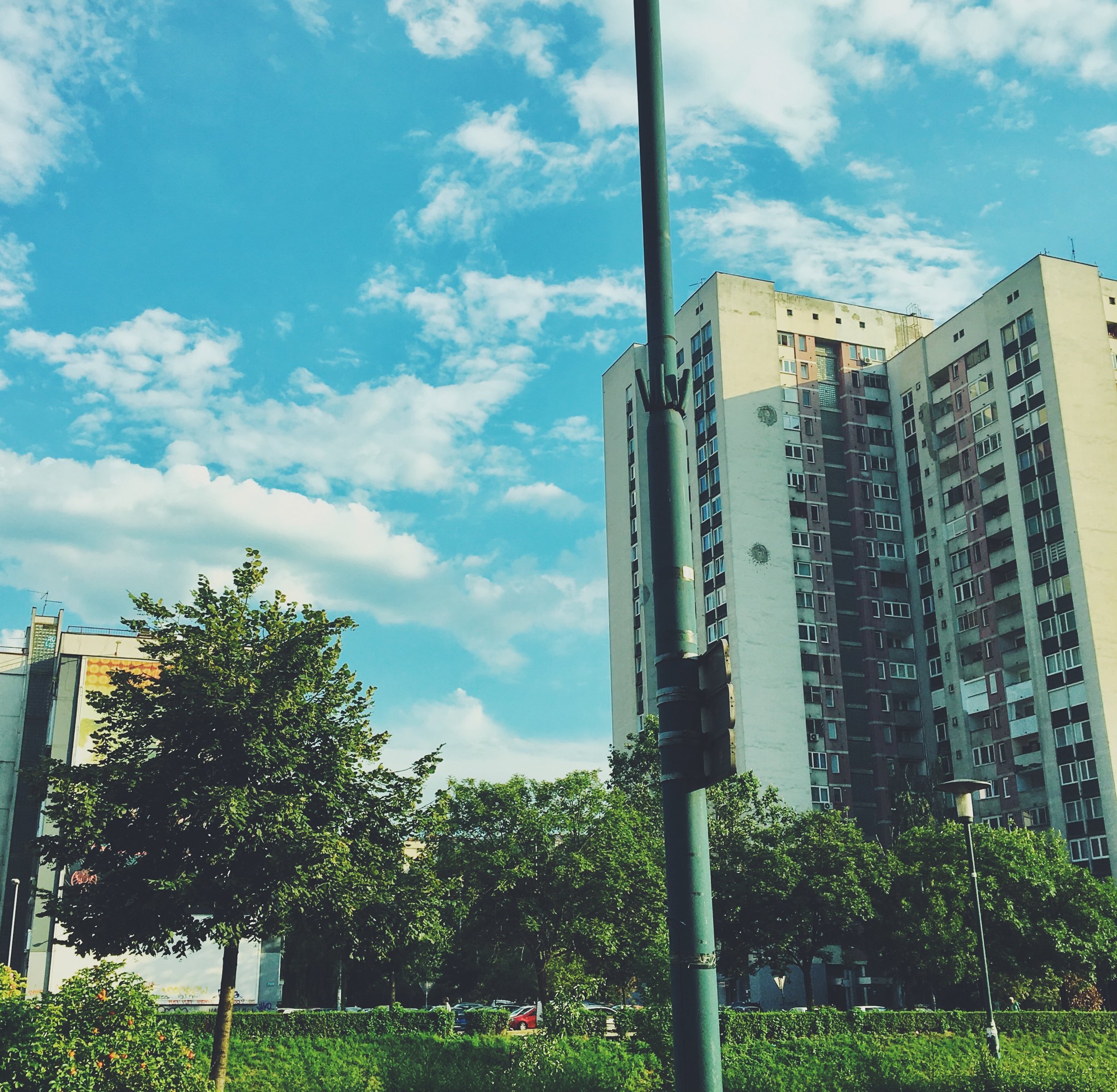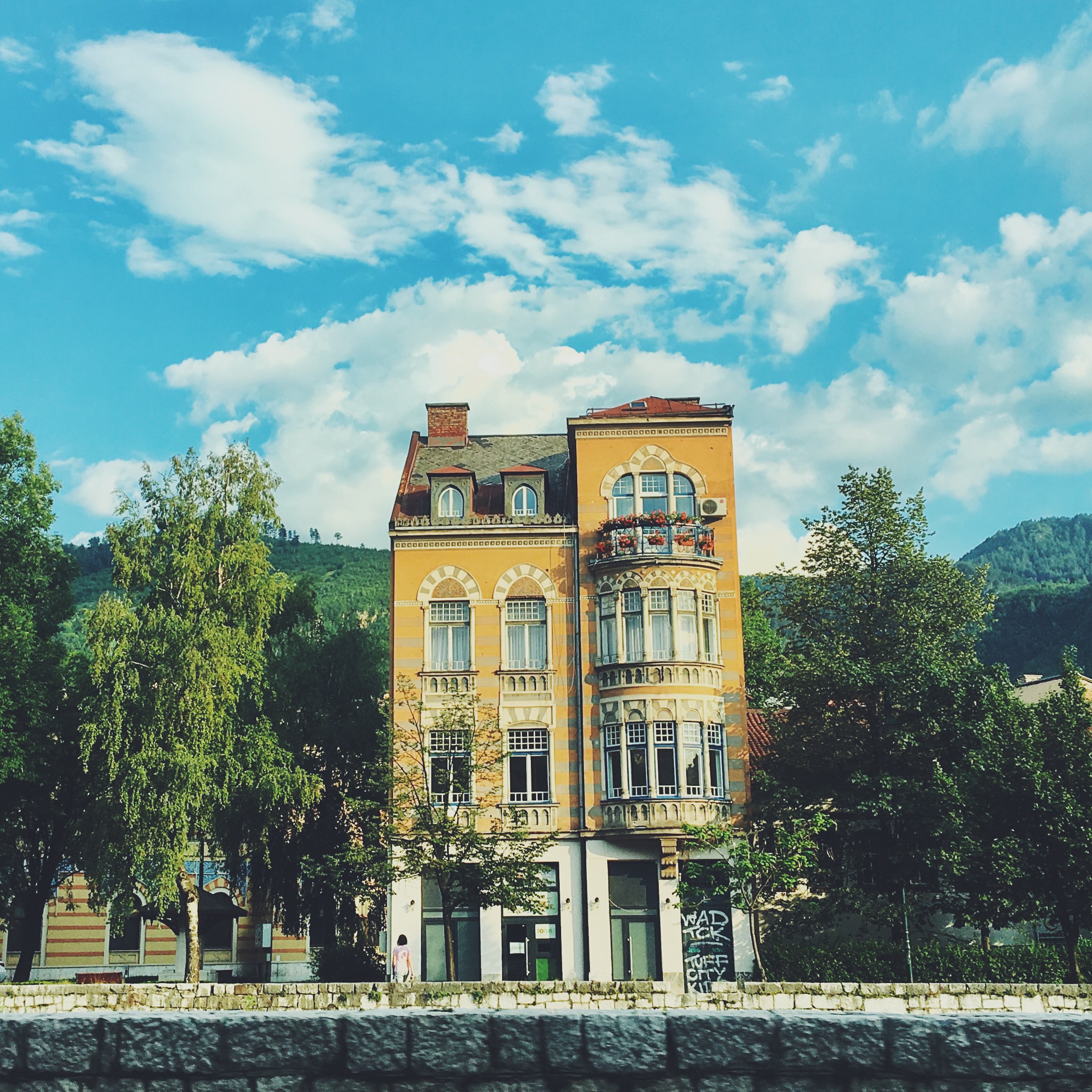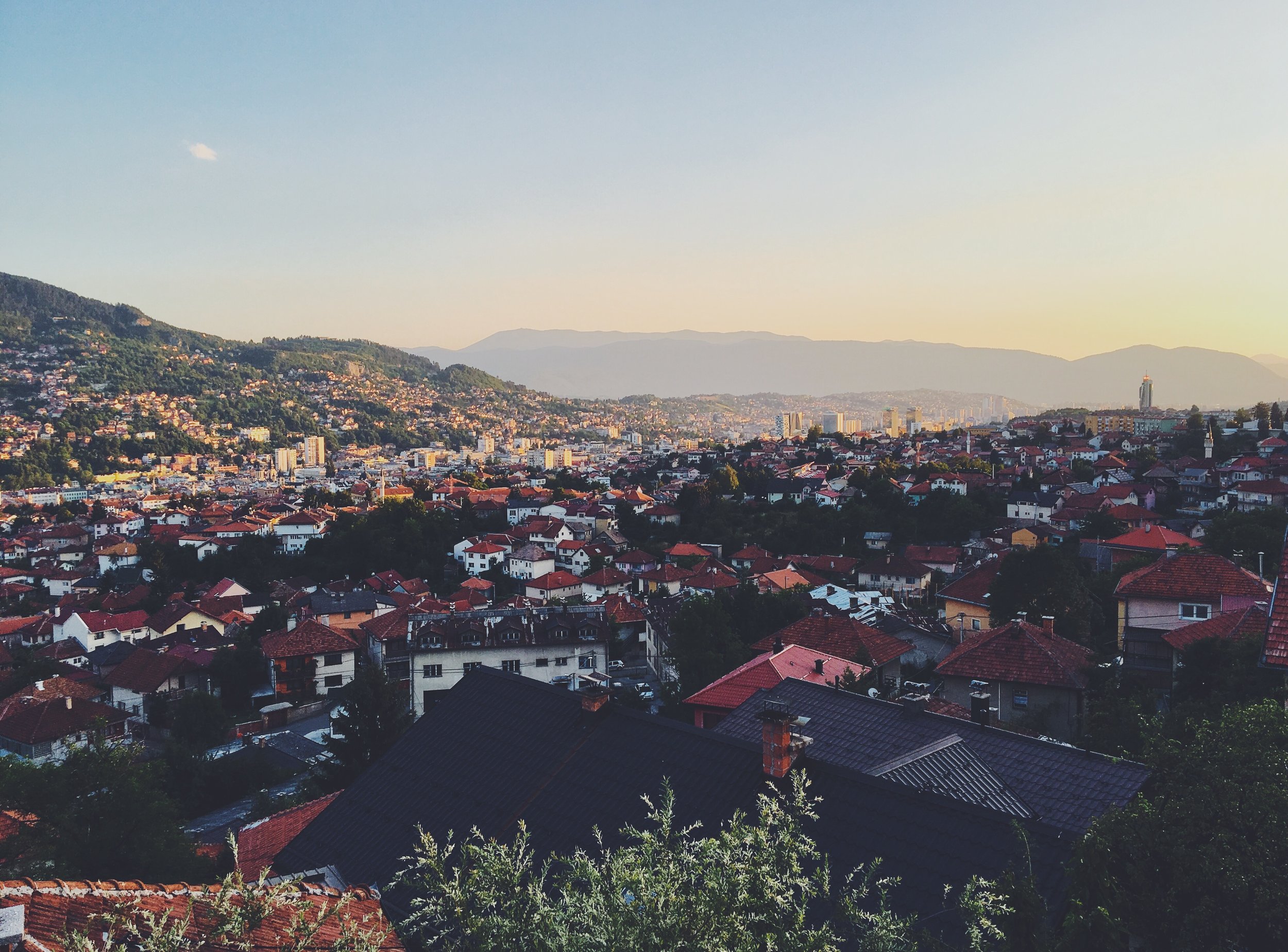SARAJEVO
Welcome to Sarajevo, city of saints, survivors and innovators. The war of the 1990's is integral to the fabric of this city and will never be forgotten. It is only one aspect of this intriguing cultural & architectural melting pot, however. There are surprises, it seems, around every corner of this ancient-modern-new-old city.
We never tired of the view from our apartment on Alije Nametka, a fifteen-minute walk up the hill from the Bascarsija, Sarajevo's 15th-century historic bazaar in the old city. The front of the flat was a wall of windows that faced a beautiful panamora (below, left). In the mornings, sunlight illuminated the mountains to the south where Olympic skiers competed in 1984. Each evening, around 10:38 PM, the call to prayer would begin and gradually, all the mosques would join in. Each night, we stopped to listen as their voices spread across the city like sparks on the wind.
“Tito was a great man.”
We heard this echoed by several Bosnians. This gentlemen (left), peddling trinkets and souvenirs from a cart on Marsala Tita street was no different. In his hand, he holds a 1961 medal of military distinction from the Yugoslav army. As we sat on stools, paging through his bulging book of Soviet-era and post-war pins, he called his friend over from another shop to join the conversation. "The time of Tito were best years," this second man exclaimed, hands in the air. "My children do not know this, but me, my parents, my grandparents—we know. In those days, we have food and jobs. All people live together: Christian, Jew, Muslim. Bosnian, Croat, Serb. They are happy times, good times. Tito was a great man."
Before we left, the man flipped through his book one last time. He extracted a small, silver pin from the 1984 Olympics. "For you," he said, handing it over with a flourish. "So that you always remember Sarajevo."
As if we could ever forget.
THINGS WE ATE
While we found less seafood in Sarajevo, we hit the jackpot with meats, vegetables, soups and sauces. One of our favorite meals was Sitni Cevap (left), a dish of savory veal in a sauce of carrots, garlic, onions, parsley, tomatoes, sugar and paprika, served with tomato and cucumber salad and flatbread. Another dish that won us over was Klepe (middle), minced meat or vegetable dumplings (similar to ravioli) in a creamy garlic sauce. Also enjoyed but not pictured) was Punjene Paprike, Bosnian stuffed peppers. Fresh fruit (right) was plentiful at the stands near the Sebilj, the landmark wooden fountain at the heart of the the bazaar in the Old City. We paired this seller's juicy apricots and berries with pastries and bread from the pekara each morning for a cheap, delicious breakfast. (Note his excellent T-Shirt which made us feel right at home!)
BOSNIAN COFFEE
Pure delight comes in the form of Bosnian Coffee! Served on a tray with tiny accoutrement—ceramic cup, copper džezvas, spoon, sugar cubes and rahat lokum (known by Westerners as "Turkish Delight"), Bosnian Coffee is made and drunk in a very specific way. In preparation, the coffee (ground with mortar and pestle) is heated with cold water in a džezva on the stove until it foams. When it is ready, the drinker first eats a piece of rahat lokum then, takes a sip of water to cleanse the pallet. Next, the foam is spooned off the top of the džezva, coffee is poured into the cup and the foam is added back on top. Lastly, a bite of sugar is taken and the rest of the cube placed beneath the tongue to dissolve as sipping continues. Some Bosnians can linger over one little cup of coffee for hours. Clearly, the pleasure lies in the ritual; the savoring of time as much as taste. We were so smitten with this Bosnian tradition that we brought back a handmade coffee set to enjoy at home.




























